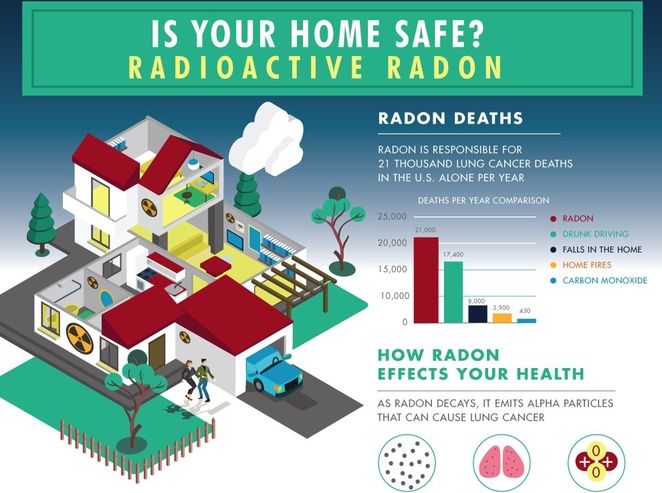

Radon is a colorless, odorless, radioactive gas. It forms naturally from the breaking down of uranium deposits in the soil. Exposure to high indoor radon levels is currently the second leading cause of lung cancer today accounting for approximately 20,000 radon related deaths per year in the United States.
Radon cannot be seen or smelled, the only way to know its presence is to perform a test. We recommend having radon levels tested by a state licensed professional radon tester,but testing may be performed by the owner of a home as well. Home testing kits are commonly available at local hardware stores or city halls. Digital continual monitors may also be used.
Radon is measured in units called “picocurie” or “pCi/L” for short. The average outdoor air level is 0.4 pCi/L. The EPA recommends taking action when indoor radon levels are 4.0 pCi/L or above. The EPA also notes that there are no safe radon levels and action should be considered even when levels are under 4.0 pCi/L.
Methods of removing radon can include “active” or “passive” radon mitigation. An active system involves installation of a radon mitigation system including a radon fan that continuously pulls air from under the foundation of the home and exhausts it back to the outdoors. Passive mitigation techniques can include sealing cracks, joints, and sump lids.
